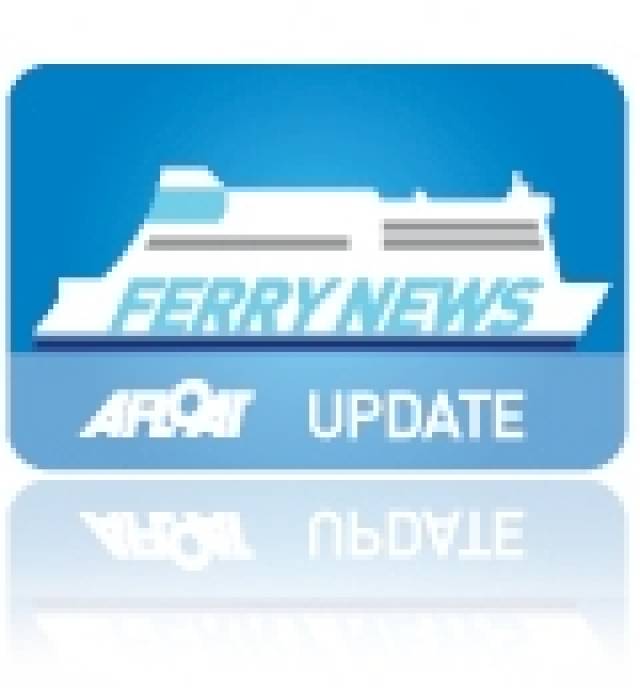#RosslareDredging – Dredging operations to remove an unprecedented amount of sand at Rosslare Europort as previously reported, has highlighted the issue and some navigation restrictions in place at the ferryport that has routes linking to the UK and France, writes Jehan Ashmore.
The task to remove 100,000m3 of sand accumulated during a spate of severe winter storms earlier this year compares starkly to previous years where the average rate generated was only around 11,000m3.
Rosslare Europort, the port authority operated by Iarnród Éireann was allocated €1.4m to contract out the dredging works to restore normal working conditions following granting of a foreshore license.
Despite the dredging, ferries remain running albeit there are some navigational restrictions along the harbour's breakwater (outer pier) as the Dutch dredger Sospan Dau (1978/1,566 tonnes) is expected to take three weeks to complete operations.
The Europort has two clients, Stena Line, serving Fishguard in Wales and Cherbourg. The Normandy port is likewise linked by Irish Ferries which too has a second continental route to Roscoff, Brittany but only in the summer.
The sheer volume of sand that shifted alongside the breakwater will keep the Sospan Dau busy in removing and transferring the deposits to neighbouring Rosslare Strand, a popular scenic stretch along Wexford's sunny south-eastern shoreline.
Fishguard route vessel, Stena Europe (1981/24,828grt) which daily uses berth no. 3 at the Europort's breakwater, makes a wider swing off the breakwater where the affected area is marked off by a buoy. Other ferries less frequently using this same berth will also have to undertake this procedure as well to making a wider sweep off the pier-head's lighthouse.
Further along the breakwater, the shifting sands have led to the in-action of berth no. 4 though currently no ferries are running from this link-span lastly operated by fast-ferry Stena Lynx III. She was marketed as the Stena 'Express' sailing summer season sailings in tandem with the 'Europe'.
The fast-ferry was sold to South Korean interests as previously reported on Afloat.ie in 2011, leaving the conventional ferry to soldier on as the oldest in the ferry firm's Irish Sea fleet.
Despite the impact of the sand, the ferryport has additional berths at No. 1 and 2 located at the inner pier.
Should the occasion arise and not just because of sand related issues, ferries have the option to be re-allocated to these berths as long as the ships design and that of the link-span are compatible.































































